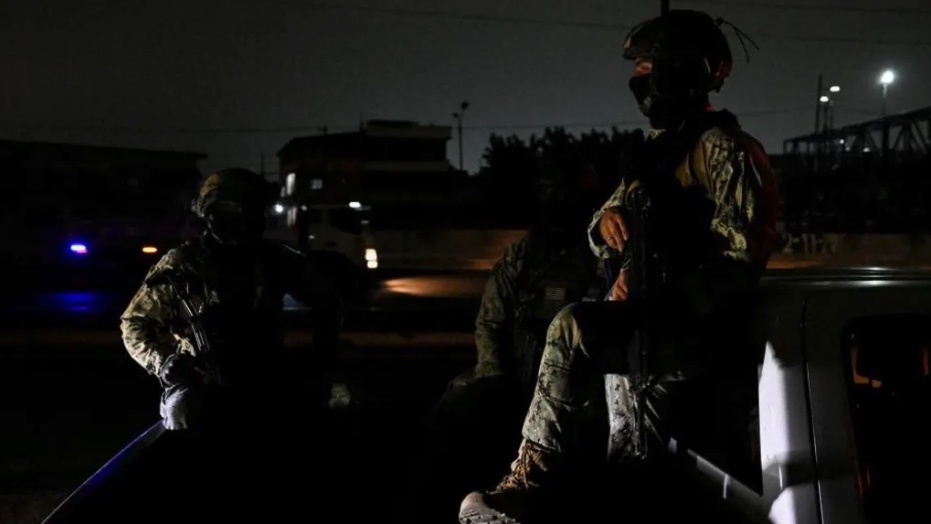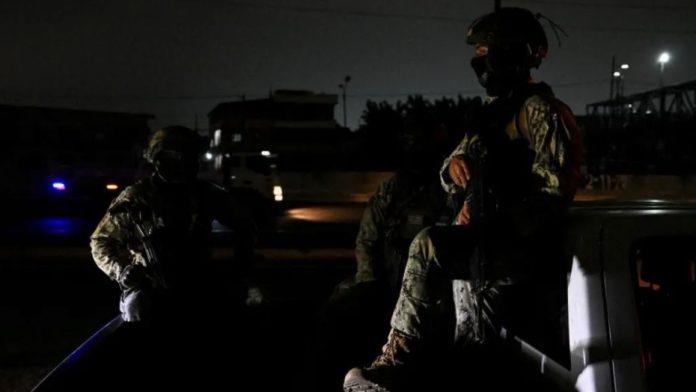การตัดไฟฟ้าเป็นขั้นตอนที่วางแผนไว้ในเอกวาดอร์ได้เริ่มต้นขึ้นเร็วกว่ากำหนดหนึ่งวัน เนื่องจากภัยแล้งรุนแรงได้ส่งผลกระทบต่อโรงไฟฟ้าพลังงานน้ำของประเทศ
ประเทศนี้กำลังเผชิญกับภัยแล้งครั้งร้ายแรงที่สุดในรอบ 60 ปี โดยไม่มีฝนตกอย่างมีนัยสำคัญมากว่า 2 เดือน
รัฐบาลได้ประกาศให้มีการตัดไฟฟ้าในเวลากลางคืนทั่วประเทศตั้งแต่วันจันทร์ แต่ในช่วงสุดสัปดาห์ที่ผ่านมา 12 จังหวัดต้องถูกตัดไฟตั้งแต่เวลา 08:00 น. ถึง 17:00 น. ตามเวลาท้องถิ่น
หลายประเทศในอเมริกาใต้กำลังเผชิญกับภัยแล้งที่ร้ายแรงที่สุดเป็นประวัติการณ์ ซึ่งยังเป็นปัจจัยที่ก่อให้เกิดไฟป่าหลายแห่งด้วย
โรงไฟฟ้าพลังน้ำครอบคลุมความต้องการไฟฟ้า 70% ของเอกวาดอร์ แต่แหล่งน้ำที่หล่อเลี้ยงโรงไฟฟ้านั้นลดลงถึงระดับวิกฤต
ประธานาธิบดีเอกวาดอร์ ดาเนียล โนโบอา กล่าวว่า อาจจะมีการตัดไฟเพิ่มเติมและมาตรการฉุกเฉินอื่น ๆ หากระดับน้ำในโรงไฟฟ้าพลังน้ำไม่กลับมาสู่ระดับปกติในเร็วๆ นี้
นอกจาก 71 วันที่ไม่มีฝนตกแล้ว โนโบอายังตำหนิภาวะฉุกเฉินนี้ว่าเป็นผลมาจากความล้มเหลวทางการเมือง
ในแถลงการณ์ ประธานาธิบดีตำหนิวิกฤตไฟฟ้านี้ว่าเกิดจากความล้มเหลวของรัฐบาลก่อนหน้านี้ที่ไม่ได้ดูแลรักษาโครงสร้างพื้นฐานอย่างเพียงพอและการขาดการวางแผนเตรียมรับสถานการณ์ฉุกเฉิน
มีการประกาศแจ้งเตือนระดับสีแดงใน 15 จังหวัดรวมถึงเมืองหลวงกีโต
ย่านต่าง ๆ ในกีโต 60 แห่งได้ถูกตัดน้ำประปาเป็นส่วนหนึ่งของมาตรการปันส่วนน้ำ
เมื่อไม่ถึงหกเดือนที่ผ่านมา ชาวเอกวาดอร์ก็เพิ่งจะต้องปันส่วนไฟฟ้า
ในเดือนเมษายน ภัยแล้งทำให้ประเทศต้องมีการตัดไฟฟ้าสูงสุดถึง 13 ชั่วโมงต่อวัน
ภัยแล้งในปัจจุบันไม่ได้เกิดขึ้นเฉพาะในเอกวาดอร์เท่านั้น หลายประเทศในอเมริกาใต้กำลังเผชิญผลกระทบจากภัยแล้งที่รุนแรงที่สุดในความทรงจำ
ภัยแล้งรุนแรงได้ทำลายพื้นที่กว้างใหญ่ในป่าอเมซอนและแหล่งชุ่มน้ำปันตานัลในบราซิล โบลิเวีย และเปรู
ในโคลอมเบีย เจ้าหน้าที่ดับเพลิงกำลังต่อสู้กับไฟป่าหลายสิบแห่ง ซึ่งได้ทำลายพื้นที่เกือบ 11,000 เฮกตาร์ (27,000 เอเคอร์)
เมื่อต้นสัปดาห์นี้ รัฐบาลเปรูประกาศภาวะฉุกเฉิน 60 วันในพื้นที่ป่าชายแดนที่ติดกับบราซิลและเอกวาดอร์ซึ่งได้รับผลกระทบจากไฟป่ามากที่สุด
ภัยแล้งยังทำให้แม่น้ำอเมซอนอ่อนแอลง ส่งผลกระทบต่อเสบียงอาหารและชีวิตความเป็นอยู่ของชาวบ้านในพื้นที่
สัปดาห์ที่แล้ว หน่วยงานธรณีวิทยาบราซิล (SGB) รายงานว่าระดับน้ำในหลายแม่น้ำในลุ่มน้ำอเมซอนอยู่ในระดับต่ำที่สุดเป็นประวัติการณ์
ในปี 2023 ลุ่มน้ำอเมซอนประสบกับภัยแล้งที่รุนแรงที่สุดในรอบอย่างน้อย 45 ปี โดยนักวิทยาศาสตร์จากกลุ่ม World Weather Attribution พบว่าภาวะโลกร้อนได้ทำให้เหตุการณ์นี้มีความเป็นไปได้มากขึ้นหลายเท่า
South America drought brings wildfires and blackouts

Planned power cuts in Ecuador have begun a day early as severe drought disrupts its hydroelectric plants.
The country is suffering its worst drought in 60 years, with no significant rainfall in more than two months.
The government had already announced nightly blackouts across the country from Monday, but 12 provinces had their power cut from 08:00 to 17:00 local time over the weekend.
Several South American countries are currently experiencing their worst droughts on record, which is also fuelling a number of wildfires.
Hydroelectric plants cover 70% of Ecuador’s electricity demand, but the water reserves that fuel it have fallen to critical levels.
Ecuadorian President Daniel Noboa said there could be further cuts and other emergency measures introduced if water levels in the hydroelectric plants are not restored soon.
In addition to the 71 days without rain, Noboa also blamed the emergency on political failings.
In a statement, the president blamed the power crisis on the failure of previous governments to adequately maintain infrastructure and the lack of contingency planning.
A red alert has been imposed in 15 provinces including the capital Quito.
Sixty neighbourhoods in Quito have had their water supplies cut as part of rationing measures.
It was less than six months ago that Ecuadorians were last rationing electricity.
In April, drought saw the country impose power cuts of up to 13 hours a day.
The current drought is certainly not contained to Ecuador – several other countries in South America are suffering the impact of the worst drought in living memory.
Extreme drought has devastated vast areas of the Amazon and the Pantanal in Brazil, Bolivia and Peru.
In Colombia, firefighters are battling dozens of fires, which have so far ravaged almost 11,000 hectares (27,000 acres).
Earlier this week, Peru’s government declared a 60-day state of emergency in the jungle regions bordering Brazil and Ecuador which have been worst affected by forest fires.
The drought has also weakened the vast Amazon River, affecting food supplies and the livelihoods of locals.
Last week, the Brazilian Geological Service (SGB) said water levels in many of the rivers in the Amazon basin had reached their lowest on record.
In 2023, the Amazon basin suffered its most severe drought in at least 45 years – which scientists at the World Weather Attribution group found had been made many times more likely by climate change.
By Jacqueline Howard, BBC News

















